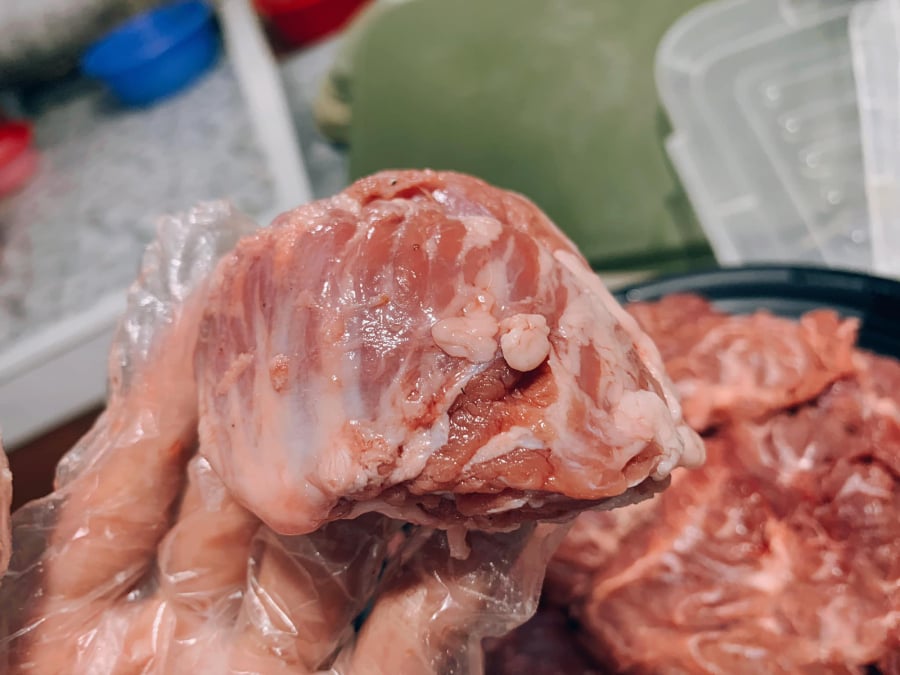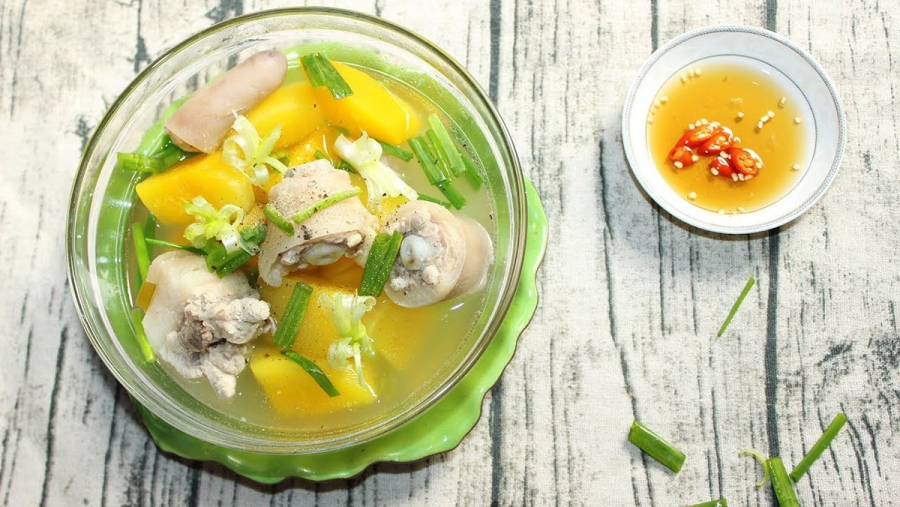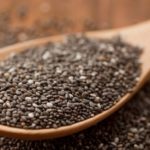Pork is quite familiar to humans, but not everyone knows which part of its body is the most delicious. According to nutritionists, there are 2 extremely nutritious parts of this animal that many people are unaware of.
Pork cheeks
Pork cheeks have soft tendons and fat between each layer of meat so they are not tough, fibrous or dry. On the contrary, they are extremely soft. However, this part is very little and rare, so if you buy it, you can cook it in any way you want, but boiling or steaming will preserve the natural sweetness of the meat better. You can totally process pork cheeks into many other delicious dishes.

Delicious and nutritious pork cheeks
How to cook delicious pork cheeks
– 500g pork cheeks
– 1 clove of garlic
– 1 onion
– Brown sugar, cinnamon, vinegar, cornstarch, star anise, peppercorns, rice wine, soy sauce
Instructions:
– Wash the pork cheeks and soak them in diluted salt water to remove the smell. Then cut into bite-sized pieces.
– Peel the garlic and onion, wash them. Cut the onion into wedges.
– Parboil the meat in boiling water for about 3-4 minutes.
– Remove the meat, put it in a pot. Add onion, cinnamon, star anise, garlic and pepper into the pot, pour water just enough to cover the meat. Cover and bring to a boil.
– When the water boils, open the lid, add ½ teaspoon of vinegar and ½ tablespoon of rice wine to the pot. Cook for another 7-8 minutes, then remove the cinnamon and star anise. Add brown sugar and 3 tablespoons of soy sauce to taste. Continue cooking over low heat for about 15 minutes.
– When the meat is tender and the sauce is almost dry, dissolve ½ tablespoon of cornstarch with water and pour it into the pot. Stir until the sauce thickens and turn off the heat.

Pig’s tail is as nutritious as ginseng and bird’s nest
Pig’s tail
In traditional medicine, the pig’s tail is sweet, slightly salty and cold. Oriental medicine believes that pig’s tail has many health benefits.
Nourishing vitality: Eating pig’s tail helps nourish the body, support kidney deficiency, premature ejaculation, provide energy and improve overall health.
Support joints and bones: The components of pig’s tail are often used to treat joint and bone problems such as: joint pain, arthritis and osteoarthritis.
Nourishes the skin: Eating pig’s tail helps retain moisture and increase skin elasticity, preventing skin aging. It is used in some skin care products to reduce wrinkles, soften and moisturize the skin.
According to nutritionists, on average, 100g of pig’s tail contains: 17.7g of protein, 33.5g of fat, 1.12mg of vitamin B3, 0.07mg of vitamin B1, 0.07mg of vitamin B2, 14mg of calcium, 47mg of phosphorus, 25mg of sodium and 157mg of potassium. Pig’s tail does not contain carbohydrates.
In particular, the composition of the pig’s tail is notable for its high zinc content. 100g of pig’s tail contains 1.64mg of zinc, accounting for about 15% of the daily value. At the same time, it is also an element that creates endogenous hormones that control the development of the body. Zinc plays a role in maintaining testosterone levels in the serum. For men, testosterone is a hormone that has a significant impact on appearance and sexual development.




































